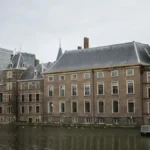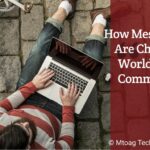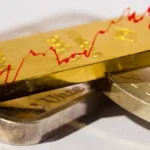There are phrases that, once spoken, carry with them an unnerving clarity—simple, direct, but resonant beyond context. “The hole is open” is one such phrase. It could describe a breach in the Earth’s ozone layer, a tear in the digital armor of a server, or even a moral lapse in a political institution. At its core, it signals one thing: exposure.
In a world increasingly defined by complex systems—ecological, digital, social—open holes represent vulnerability. They are not always visible, but their presence shapes decisions, responses, and the capacity for resilience.
This article explores the layered meanings of “the hole is open”—from environmental degradation to cybersecurity breaches to metaphorical breakdowns in governance and trust. It seeks to unpack how gaps form, how they are discovered, and what happens when they are left unaddressed.
Atmospheric Warnings: When the Sky Falls Apart
In environmental science, the phrase has long echoed through one particular context: the ozone hole. First discovered in the 1980s, the thinning of the ozone layer over Antarctica became one of the most visible signs of human impact on the atmosphere.
“The hole is open” in this context wasn’t just a phrase—it was a seasonal reckoning. Each year, as spring sunlight returned to the Southern Hemisphere, it triggered chemical reactions in the stratosphere that destroyed ozone, a gas critical for shielding the Earth from ultraviolet radiation. The “hole” expanded, and headlines followed.
The metaphor stuck. The ozone crisis became an environmental parable—a hole that, once opened, exposed a fragile balance.
But that story also held hope. The Montreal Protocol, signed in 1987 and ratified by every UN member state, phased out ozone-depleting substances. Decades later, scientists observed slow but measurable healing. As of 2025, the hole still opens seasonally, but its size is shrinking.
Yet the phrase remains relevant, even haunting, in a broader environmental sense. In climate systems, holes now represent more than just ozone—they mark glacial calving, permafrost thawing, groundwater depletion. Each open hole is a punctured promise of planetary stability.
Digital Breaches: Cybersecurity in the Era of Invisible Threats
“The hole is open.”
In cybersecurity command centers, this phrase signals a moment of terror. It means a firewall has failed, a zero-day exploit has been activated, or that data exfiltration is underway. Today’s attacks are not always loud or visible. They creep in quietly, live in systems for months, and trigger only when the damage is irreparable.
The most infamous breaches—SolarWinds, Colonial Pipeline, Equifax—have taught a painful lesson: perimeter defenses are often insufficient, and the systems we trust to protect our infrastructure and data are only as strong as their weakest node.
As artificial intelligence tools evolve, cybersecurity holes become harder to predict. Attackers use AI to generate polymorphic malware that changes its signature every hour. AI-driven phishing simulations now read like personalized letters. The modern security paradigm has shifted from “keeping threats out” to “assuming they’re already inside.”
In this context, “the hole is open” is not a moment of failure—it’s the beginning of triage.
A growing discipline known as cyber resilience now guides policy. It emphasizes redundancy, recovery, and response time, not just prevention. Companies invest as much in disaster recovery as they do in prevention, acknowledging that some holes can’t be closed in time—they must be navigated.
Financial Systems: Holes in the Safety Net
In economics, the hole may be invisible, but its presence is deeply felt.
Consider the global supply chain crisis of the early 2020s. When COVID-19 lockdowns began, factories halted, logistics networks frayed, and just-in-time delivery models crumbled. What emerged was not a temporary glitch, but a structural vulnerability—a hole in the design of global commerce.
Suddenly, governments and companies realized they had over-optimized. Efficiency had replaced resilience. Fragility had been baked into the system.
“The hole is open,” economists warned. It wasn’t just about shipping delays. It was about the inability of entire economic systems to absorb shocks. Microchips delayed meant car production halted. Container shortages in Asia led to empty shelves in Europe. The hole was not just open—it was multiplying.
In response, countries began reshoring critical industries. Financial analysts tracked exposure metrics, not just profit margins. Investors began asking about black swan readiness as part of ESG frameworks. The hole had exposed more than inefficiency—it had revealed interdependence without contingency.
Infrastructure: The Physical Manifestation of Risk
In literal terms, “the hole is open” applies to crumbling infrastructure.
In Flint, Michigan, it meant lead in the water. In New Orleans, it meant levees that couldn’t hold. In Baltimore, it meant a shipping bridge collapse in 2024 that shut down trade on the Eastern Seaboard for weeks.
Each of these events shared a common denominator: deferred maintenance, known risks, and systemic neglect.
The term “infrastructure gap” often refers to underinvestment in roads, bridges, pipes, and transit. But that gap, when left unaddressed, becomes a hole—one that opens slowly, then all at once.
According to engineering risk reports, more than 40% of U.S. bridges are over 50 years old. The power grid, a backbone of digital life, faces increasing load from EVs and data centers while operating on outdated hardware. And yet, funding struggles continue, often stalled by politics rather than practicality.
In the realm of infrastructure, the open hole is not a surprise. It is a consequence.
The Human Layer: Holes in Trust and Truth
Beyond the technical and physical, “the hole is open” can also be felt in cultural and political spaces.
In democracies, it means distrust. When faith in institutions falters—when public health is politicized, elections are questioned, and information becomes fragmented—the social contract begins to erode. The hole opens in belief systems.
Disinformation campaigns do not need to win arguments. They only need to create confusion. And confusion opens holes—between truth and fiction, between people and institutions, between neighbors.
A study conducted in 2023 found that over 60% of respondents in developed countries could not confidently distinguish between real and AI-generated news headlines. Trust, once lost, is hard to repair.
When the hole is open in a society’s information architecture, every other vulnerability becomes easier to exploit—whether by domestic division or foreign interference.
Psychological and Emotional Holes: Burnout and Isolation
There is another kind of exposure that goes unnoticed until it overwhelms—the human kind.
The pandemic, remote work, and economic precarity have created what some psychologists now call “the burnout generation.” It’s not just about working too much—it’s about working without meaning, without connection, without boundaries.
“The hole is open” here means the boundary between self and system has collapsed.
Burnout is now classified by the World Health Organization as a workplace syndrome. But its roots run deeper—into loneliness, erosion of purpose, and digital disembodiment. People scroll endlessly, attend Zoom meetings without speaking, and experience physical communities only through windows or Wi-Fi.
Mental health infrastructure, too, is showing holes. Demand for therapy has outpaced supply in most urban areas. Youth suicide rates continue to climb. These are not blips—they are structural cracks.
When the emotional hole is open, people do not always ask for help. Often, they simply disappear.
Space, Science, and Existential Holes
Even in astrophysics, “the hole is open” takes on dimension.
In 2019, scientists captured the first image of a black hole—an open chasm in spacetime itself. This wasn’t a metaphor. It was a literal hole, observable by its absence, visible by what it devoured.
Black holes, wormholes, event horizons—these terms no longer belong only to science fiction. They are reminders that the universe itself contains absences, voids, and unknowns.
In cosmology, a hole is not failure. It is mystery.
Perhaps that’s a final frontier for this phrase. “The hole is open” doesn’t always mean collapse. Sometimes it means invitation. An aperture into the unexplored.
When the Hole Is Open: What Now?
Across all domains—ecological, technological, social—the hole being open signifies a moment of reckoning. It is a challenge and an opportunity.
But whether it becomes crisis or catalyst depends on how we respond.
Will environmental “holes” lead to greener technologies or endless denial?
Will digital “holes” lead to stronger encryption or deeper surveillance?
Will emotional “holes” lead to reconnection or retreat?
Will trust “holes” be patched through transparency or widened by misinformation?
The choice is ours, but time narrows that choice every day.
Conclusion: Naming the Gap Before It Grows
“The hole is open” is not just a diagnosis—it’s a signal. Of risk. Of reality. Of readiness.
Every system, no matter how well-designed, has limits. Holes open when those limits are tested. The challenge is not to deny them—but to see them, study them, and repair them before they expand.
In a world addicted to speed, spectacle, and certainty, the greatest wisdom may come from slowing down long enough to say: something is missing. Something is broken. The hole is open.
And now that we’ve seen it—we cannot look away.
FAQs
1. What does “The Hole Is Open” mean in an environmental context?
It typically refers to environmental vulnerabilities, such as the seasonal thinning of the ozone layer or other ecological breaches, signaling increased exposure to climate risks.
2. How is the phrase used in cybersecurity?
In cybersecurity, “the hole is open” refers to a breach or vulnerability in a digital system—such as an unpatched software flaw—allowing unauthorized access or data compromise.
3. Can “the hole is open” apply to infrastructure or public systems?
Yes. It can signify a physical failure—like a bridge collapse, water contamination, or aging utilities—that exposes communities to danger or disruption.
Absolutely. It often symbolizes a breakdown in public trust, truth, or social cohesion—gaps in the systems meant to protect or connect us.
5. What should individuals or institutions do when “the hole is open”?
Recognizing the vulnerability is the first step. The next is transparent communication, rapid response, and long-term systemic repair to restore resilience.











